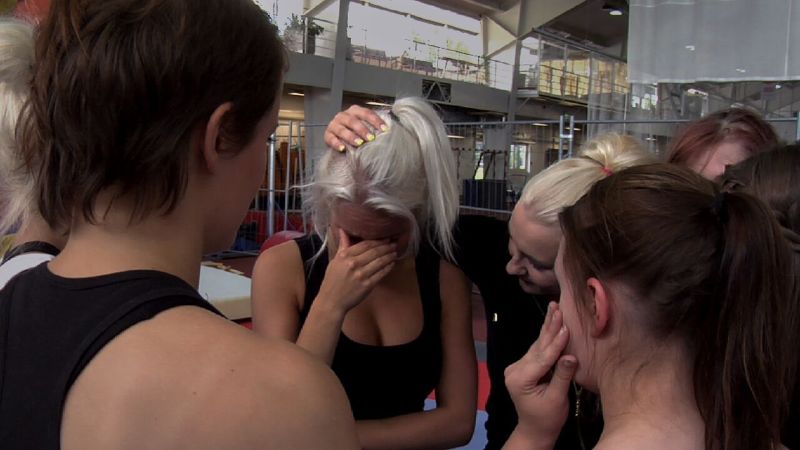Like this article? rabble is reader-supported journalism. Chip in to keep stories like these coming.
Award-winning Canadian director, Christy Garland, is premiering her third feature documentary at Hot Docs, North America’s largest documentary festival, in Toronto this week. Garland is well known for her award-winning documentary, The Bastard Sings the Sweetest Song. However, Cheer Up proves to be a more light-hearted film than her earlier features.
Garland’s latest documentary follows the struggles of a Finnish cheerleading squad that never seems to place in competitions. Cheer Up focuses on three young women and follows them as they negotiate difficult family situations and relationships, while giving their all to the sport that forms such an important part of their life.
Coach Miia struggles to raise the athletic level of the team and to get the squad to focus. For teenagers Aino and Patu, their commitment to the team vies with family and relationship problems. Although told through the lens of cheerleading, the story is about much more than whether this squad will manage to pull itself up by its sneaker laces.
For Miia, the success of the team means personal success. A beautician by day, cheerleading is her passion, leading her to drive the amateur squad hard and leaving her little time for a personal life. Her determination that her team will succeed takes her to Texas, where she gains tips from the coach of professional cheerleading teams. Miia returns to Finland with renewed determination and a can-do attitude. However, this American optimism doesn’t translate to her team, who seem pessimistic about their abilities.

In a way, it doesn’t seem to matter how high the team places in the competitions the girls attend. The film celebrates the athleticism of cheerleading, but doesn’t dwell on the technical aspects of the sport, or ask why the team isn’t doing as well as they hope. For Garland, the film intentionally subverts the conventions of sports movies. She argues that “while, of course, it’s important to have dreams, the up and downs on a day-to-day basis ends up being what your life is [about].” It is here that audience and film subjects find common cause.
Like many good documentaries, Cheer Up‘s beauty is to be found in its close-up on the profoundly human stories of its characters. By focusing on the minute details of life, it brings everyday trials and tribulations into sharp focus. Cheer Up records the fleeting emotions and ongoing struggles that every teenager and adult has to deal with. The film draws connections between its audience and the women it portrays by drawing out this shared human experience.
In the end, whether the squad wins or loses doesn’t really matter. Garland argues that this focus on a sports team who doesn’t always win is part of the film’s interest for her. “While, of course, it’s important to have dreams, the up and downs on a day-to-day basis ends up being what your life is if you don’t reach what you think is your ultimate goal. So it’s kind of a celebration of…life.” It is in the profoundly human perspective of the documentary that the film finds its redemption.

Garland extends this philosophy to her own success as a filmmaker. “I personally believe in failure. I’ve been lucky enough to win awards with my films before, [but] of course some things I’ve wanted to accomplish I haven’t accomplished and [failure] is just extremely important. It’s something I wanted to shine a different light on, and celebrate in a way.”
Garland’s focus on a failing sports team is part of her intention to undermine the traditional narrative of sports film, in which the underdog rises to the top. Instead of a story that is about a cheerleading squad, we end up with a story that tells the difficulties of coming-of-age, the pressures of being a teen girl and the challenges of being an adult.
Cheer Up is featured at the Hot Docs Film Festival in Toronto. It will be showing May 5 and 7 at the TIFF Bell Lightbox theatre. For distribution information contact the production company here.
Like this article? rabble is reader-supported journalism. Chip in to keep stories like these coming.



